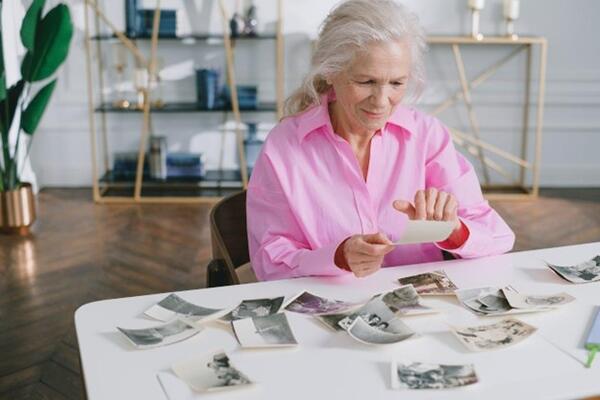
How Photography Memory Books Foster Bonds in Elder Care
Aging often comes with a lot of health challenges, but few things weigh heavier than loneliness. This is especially true for seniors who live in assisted living or nursing homes. Visits from family help, sure - but those visits can sometimes feel routine, even surface-level. You chat, ask how they’re doing, maybe bring a snack or two. But then what?
Finding ways to have deeper conversations and create lasting moments is key, and photography memory books provide a wonderful way to achieve both.
So much more than just albums, these books are a great way to unlock long-forgotten memories, encourage storytelling, and give seniors a way to relive their proudest moments. But beyond nostalgia, memory books also provide real cognitive and emotional benefits, especially for those dealing with memory loss.
Strengthening Family Bonds Through Memory Books
A photo memory book is a powerful memento, a tangible representation of cherished moments, personal achievements, and family history. Sitting down with a loved one to compile one allows you to revisit stories, laugh over old photos, and celebrate the experiences that shaped their life.
For seniors in care facilities, this process offers something invaluable: a shared activity that fosters conversation and emotional connection. Looking at familiar faces and places can prompt detailed storytelling, helping to strengthen relationships with children, grandchildren, and even caregivers who may not have known the full depth of their history.
Creating Intergenerational Connections
Bridging the gap between generations can be a challenge, especially when younger family members struggle to relate to a grandparent’s past. Memory books provide a natural way to spark conversations that might not happen otherwise.
Think about it: a grandchild who flips through a book and sees a photo of their grandmother as a young athlete or their grandfather in military uniform might be surprised and curious ("oh my god, my grandma was young once, too!"). Those moments invite questions, leading to engaging stories that connect past and present.
It also gives seniors a chance to pass down family history in an engaging way. Instead of vague recollections, they have a structured way to share their life’s highlights, ensuring their legacy remains vivid for generations to come.
Boosting Cognitive Health and Emotional Well-Being
The best thing about memory books is that they do more than create emotional connections: they also support cognitive health. Studies have shown that reminiscence therapy - so, talking about past experiences - can improve mood, increase social interaction, and even slow memory decline in those with early dementia or Alzheimer’s. Why? Because photos serve as powerful triggers, jogging memories that might otherwise fade.
The act of assembling a book also engages multiple cognitive skills, including:
- Recall and Recognition: Matching faces with names and dates strengthens memory pathways.
- Organization and Decision-Making: Choosing which photos to include and in what order exercises executive function.
- Emotional Processing: Reflecting on past experiences fosters a sense of fulfillment and identity, reducing anxiety and depression.
For seniors who may feel that life in a care facility lacks purpose, creating a memory book provides a meaningful project with a rewarding outcome.
How to Create a Great Photography Memory Book
If you’re thinking of making a memory book with a senior family member, we recommend keeping it simple but intentional. Here are some easy steps to creating a truly meaningful photo book:
Gather Photos Strategically
Start with photos that evoke strong memories, like major milestones, vacations, and family gatherings. Still, don't forget everyday moments that capture their personality. If you don’t have many physical photos, scanning old albums or printing digital pictures works well.
Organize by Theme or Timeline
Some people prefer chronological storytelling, while others enjoy grouping photos by themes like childhood, career, or family life. Let your loved one decide what feels most natural.
Include Captions and Notes
A memory book should have context, so add names, dates, and short descriptions to photos. Even better, include direct quotes from your loved one to capture their voice and personal reflections.
Make It Interactive
Leave space for handwritten notes or small mementos like pressed flowers or ticket stubs. If they enjoy writing, encourage them to jot down thoughts as they revisit old memories.
Add Modern Touches
If your loved one enjoys digital media, consider adding QR codes linked to video clips or recorded messages. Some services allow you to scan a photo and create a digital storybook.
Keeping the Tradition Alive
Once a memory book or calendar is completed, it shouldn’t just sit on a shelf or hang on a wall. Make it part of visits - flip through it together, add new pictures, and keep the conversation going. Some families even make it an annual tradition, updating the book with recent milestones while revisiting old favorites.
In elder care settings, staff can use these books to engage residents, especially those with memory loss. Seeing familiar faces and places helps ground seniors in the present while keeping their past alive in a comforting way.